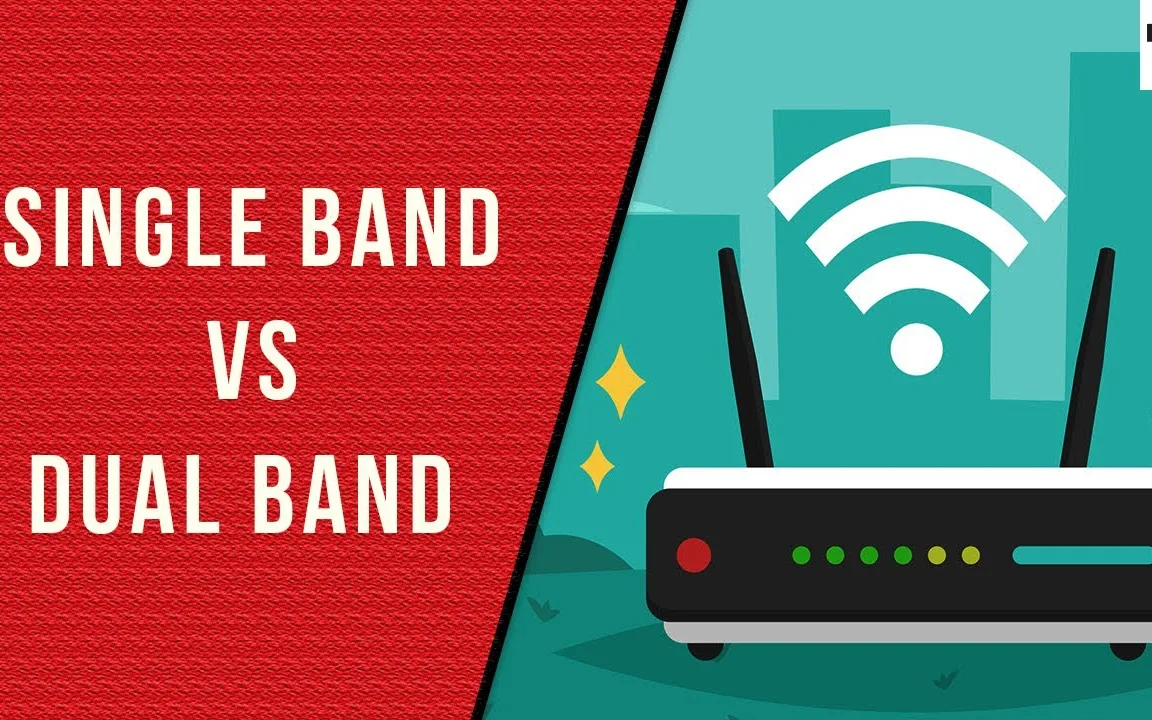When it comes to choosing a wireless router, one of the important factors to consider is whether to go for a single-band or dual-band router. In this article, we’ll explore the differences between these two types of routers, their advantages and disadvantages, and which one might be best for your needs.
Single-band routers operate on the 2.4 GHz frequency band, and they are typically less expensive than dual-band routers. They are also compatible with most devices, including older ones that do not support the 5 GHz band. However, the 2.4 GHz band is also used by other devices such as microwaves and cordless phones, which can cause interference and slow down your internet speed. Additionally, the 2.4 GHz band has a shorter range than the 5 GHz band, which can affect coverage in larger homes or buildings.
On the other hand, dual-band routers are capable of transmitting and receiving data on both the 2.4 GHz and 5 GHz frequency bands. This provides users with more options and flexibility when it comes to optimizing their wireless network performance. The 5 GHz band is faster than the 2.4 GHz band, and it is less prone to interference from other devices. This makes it ideal for tasks that require high-speed internet, such as streaming videos or online gaming.
However, not all devices are compatible with the 5 GHz band. Older devices may only support the 2.4 GHz band, which means they will not be able to take advantage of the faster speeds and lower interference of the 5 GHz band. Additionally, the higher frequency of the 5 GHz band means that it has a shorter range than the 2.4 GHz band. This can result in weaker signals and reduced coverage in larger spaces.
In terms of cost, dual-band routers are generally more expensive than single-band routers. This is partly due to the added hardware required to support both frequency bands. However, the extra cost may be worth it for users who need faster speeds and better performance from their wireless network.
The choice between a single-band and dual-band router will depend on your specific needs and requirements. If you have older devices that only support the 2.4 GHz band or you have a smaller space that does not require extensive coverage, a single-band router may be sufficient. However, if you need faster speeds and better performance, and you have newer devices that support the 5 GHz bands, a dual-band router may be a better option. Ultimately, it is important to do your research and choose a router that meets your specific needs and budget.

The Benefits of Dual Band Over Single Band
Dual-band routers are generally considered better than single-band routers. This is because dual-band routers use two frequencies, 2.4 GHz and 5 GHz, whereas single-band routers only use the 2.4 GHz frequency.
Dual-band routers are more efficient because they can handle more traffic and provide faster speeds. They also have a longer range and are less prone to interference from household devices, such as microwaves and older cordless phones. This is because they operate on a less crowded frequency.
Furthermore, dual-band routers are faster because they can divide the workload between the two frequencies. For example, a device that supports 5 GHz can connect to the 5 GHz frequency, which is less crowded and provides faster speeds.
However, it’s important to note that the efficiency of dual-band routers is maximized when using 5 GHz compatible devices. If most of your devices only support 2.4 GHz, then a dual-band router may not be worth the investment.
Dual-band routers are generally considered better than single-band routers due to their efficiency, longer range, and faster speeds.
When to Use a Dual Band Router
A dual-band router is a useful device that can be used in many scenarios. Here are some instances when you would want to use a dual-band router:
1. If you have multiple devices: If you have several devices that connect to your Wi-Fi network, a dual-band router can help. You can assign certain devices to connect to the 2.4 GHz band and others to the 5 GHz band. This allows you to balance the load and avoid congestion.
2. If you have a large home: If you have a large home, a dual-band router can help ensure that you have a strong Wi-Fi signal throughout. You can place the router in a central location and use the 5 GHz bands for areas that are far away from the router.
3. If you need to stream HD video: If you enjoy streaming HD video or playing online games, a dual-band router can help. The 5 GHz band offers faster speeds and less interference, making it ideal for these types of activities.
4. If you want to avoid interference: If you live in an area with many Wi-Fi networks, a dual-band router can help you avoid interference. You can switch between bands to find the one with the least interference and get a stronger signal.
A dual-band router is a versatile device that can help you get the most out of your Wi-Fi network.
Which is Better: Dual Band or 5GHz?
When it comes to the choice between dual band and 5GHz, the answer depends on what you prioritize. Dual-band routers offer both 2.4GHz and 5GHz bands, which allows for more compatibility with older devices that only support 2.4GHz. However, the downside is that the 2.4GHz band is more crowded and susceptible to interference from other devices, which can negatively impact performance. On the other hand, 5GHz is a newer and less crowded band, which can offer higher speeds and better performance. So, if you prioritize speed and performance, 5GHz will be the better option. But, if you have older devices that only support 2.4GHz, you may need to stick with dual-band to maintain compatibility.
Benefits of Using a Dual Band Router
A dual-band router is better than a single-band router because it can support two different frequencies, 2.4GHz and 5GHz. The 2.4GHz frequency is commonly used by many devices, which can cause network congestion and slower speeds. The 5GHz frequency, on the other hand, is less congested and can provide faster speeds. Dual-band routers can switch between these two frequencies depending on the needs of the devices connected to the network. This can result in improved performance and reliability of the network. Additionally, dual-band routers can support more devices at once, providing a better experience for users. a dual-band router is a great choice for those who want faster speeds, less network congestion, and support for multiple devices.
Conclusion
The band of a router plays a significant role in determining the quality of your internet experience. Dual-band routers, which can transmit data at both 2.4 GHz and 5 GHz frequencies, offer a number of advantages over single-band routers. They are faster, have a longer range, are less prone to interference, and can support multiple devices simultaneously. Additionally, the 5GHz band, which is the newer of the two, has the potential to cut through network clutter and interference to deliver maximum network performance. Tri-band routers take things a step further, offering an additional 5GHz band for even better performance in households with multiple streaming devices. Ultimately, the band you choose will depend on your individual needs and the devices you are using, but it’s clear that dual-band and tri-band routers offer significant advantages over teir single-band counterparts.








